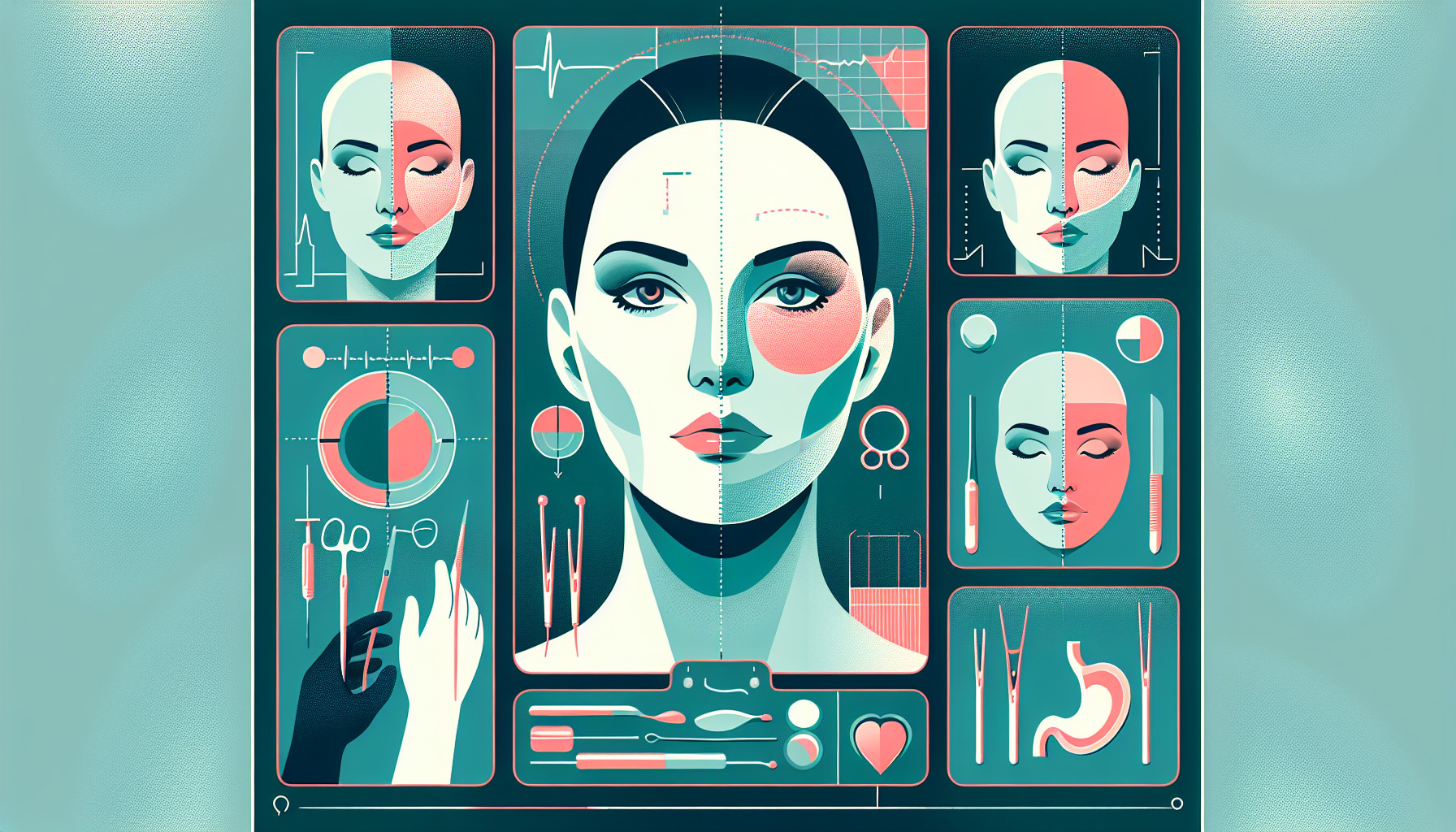Our Summary
This research paper explores the use of technology in craniofacial surgery, particularly for surgeries involving the eye socket (orbital volume, or OV). It explains that managing the OV is crucial for achieving good appearance and function after surgery. The study highlights the increasing use of computer-designed and 3D-printed implants that are tailored to individual patients.
Measuring the OV accurately before surgery is becoming more critical for surgeons. However, there’s no agreed-upon method for how to do this. The most common method involves manually examining CT scans, but this can be time-consuming and prone to mistakes.
The paper describes various other validated methods for measuring the OV that can help surgeons prepare for surgery. It also discusses the main software tools used for these methods. The study further touches on how these measurements are important for predicting and treating a condition where the eye sinks back into the eye socket (enophthalmos), as well as for reconstructing the eye socket.
FAQs
- What is the importance of managing the Orbital Volume (OV) in craniofacial surgery?
- How is technology, specifically 3D-printing, being utilized in craniofacial surgery?
- What are some of the validated methods for measuring the OV as described in this research paper?
Doctor’s Tip
In addition, a doctor may advise a patient undergoing craniofacial surgery to follow post-operative care instructions carefully to ensure proper healing and optimal results. This may include keeping the surgical area clean, avoiding strenuous activities, and attending follow-up appointments as scheduled. Patients should also communicate any concerns or unusual symptoms to their healthcare provider promptly.
Suitable For
Patients who may be recommended for craniofacial surgery include those with congenital craniofacial abnormalities such as cleft lip and palate, craniosynostosis, or facial asymmetry. Patients with traumatic injuries to the face, such as fractures of the orbital bones or severe facial trauma, may also benefit from craniofacial surgery. Additionally, patients with tumors or other growths affecting the facial bones or soft tissues may require craniofacial surgery for removal and reconstruction.
Overall, craniofacial surgery is typically recommended for patients who have functional or aesthetic concerns related to the structure of their face or skull. The use of technology, such as computer-designed implants and advanced imaging techniques, can help surgeons plan and execute these complex surgeries with greater precision and success.
Timeline
Before craniofacial surgery, a patient typically undergoes a series of consultations with their surgeon to discuss the procedure, expectations, risks, and recovery. They may also undergo various imaging tests, such as CT scans or MRIs, to assess the extent of their condition and plan the surgery.
During the surgery itself, the surgeon will make incisions, reposition bones and tissues, and possibly use implants or grafts to reconstruct the facial features. The surgery can take several hours to complete, depending on the complexity of the case.
After the surgery, the patient will be monitored closely in the hospital for a period of time to ensure proper healing and to manage any pain or discomfort. They may require medications, such as antibiotics or pain relievers, and will likely have follow-up appointments with their surgeon to monitor their progress.
Over the following weeks and months, the patient will slowly recover and begin to see the results of the surgery. They may experience swelling, bruising, and discomfort during this time, but as the healing process progresses, they should notice improvements in their appearance and function.
In the long term, patients who undergo craniofacial surgery can expect to see significant improvements in their facial symmetry, aesthetic appearance, and overall quality of life. Regular follow-up appointments with their surgeon will help ensure that the results of the surgery are maintained and any potential issues are addressed promptly.
What to Ask Your Doctor
Some questions a patient should ask their doctor about craniofacial surgery include:
- What specific techniques will be used during the surgery to address my craniofacial concerns?
- How will the surgery impact my appearance and function post-operatively?
- Are there any potential risks or complications associated with the surgery that I should be aware of?
- What is the expected recovery time and follow-up care after the surgery?
- Will I need additional procedures or treatments in the future to maintain or improve the results of the craniofacial surgery?
- How experienced are you in performing craniofacial surgery, particularly in the specific area that needs to be addressed?
- Can you provide me with information on any alternative treatment options available for my condition?
- Will I need any imaging or measurements taken before the surgery to ensure optimal results?
- How will my facial features be preserved or enhanced during the surgery?
- Can you explain the role of technology, such as computer-designed implants, in my specific craniofacial surgery procedure?
Reference
Authors: Sentucq C, Schlund M, Bouet B, Garms M, Ferri J, Jacques T, Nicot R. Journal: J Plast Reconstr Aesthet Surg. 2021 Mar;74(3):581-591. doi: 10.1016/j.bjps.2020.08.101. Epub 2020 Sep 20. PMID: 33041237
